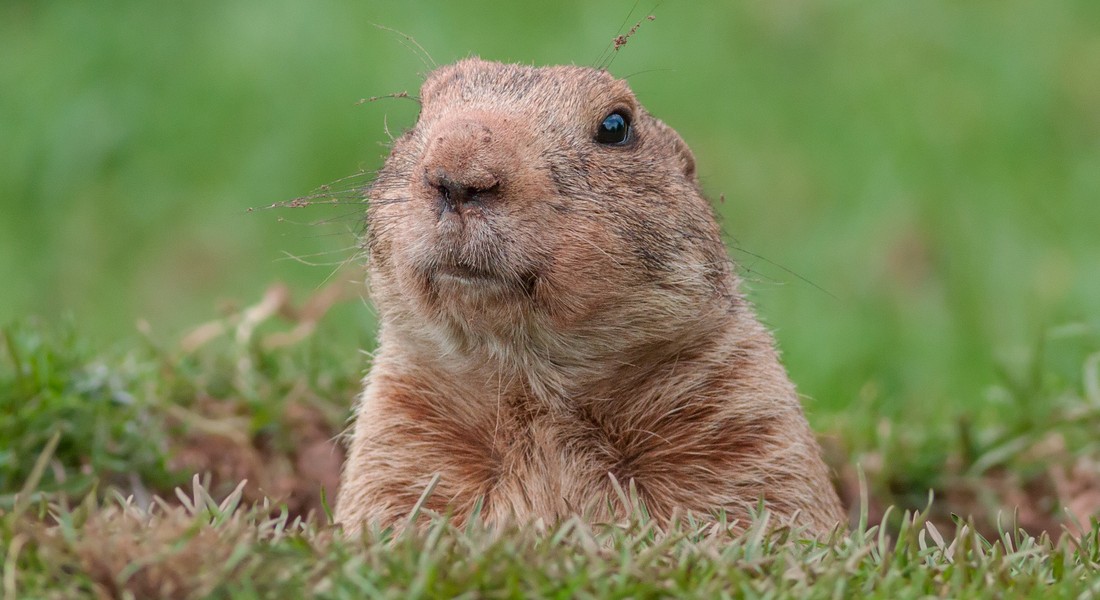Spy satellites reveal: Marmots flee agricultural areas
Data from a Cold War-era satellite show that agricultural expansion has a negative impact on biodiversity and wildlife across many parts of the planet. For example, in The Eurasian Steppes, agriculture have destroyed the living conditions of marmots. This is the conclusion of a new study by University of Copenhagen researchers and their research colleagues.

Spy satellites can be deployed for more than monitoring and predicting an enemy's next move.
This is evident in a new study in which researchers used Cold War-era spy satellite data to map the impact of agriculture on biodiversity across Eurasia. The Eurasian Steppes stretch from Europe, through Russia and to Mongolia, and includes countries such as Austria, Hungary, Moldova, Ukraine, Kazakhstan and Russia.
Images from the satellite reveals that agricultural activity in these areas often has a negative impact on biodiversity and, including, the Bobak Marmot populations in Europe and Asia:
"Since the 1960s, there has been a significant decrease in the number of marmots in northern Kazakhstan, at 14 percent. This is connected to the expansion of agriculture in large grasslands do to the high demand of food in Sovjet after The Second World War. Their flight could lead to an eventual decrease of the overall population of these rodents," says Alexander V. Prishchepov, an associate professor at the University of Copenhagen’s Department of Geosciences and Natural Resources Management.
He explains that, while Denmark is not among the countries studied, there is an abundance of research to suggest that Danish animal and plant life can be severely affected by conventional cultivation practices.
Satellite opens window to the past
Until now, it was impossible to gauge how animal and plant species reacted to increasingly large agricultural tracts prior to the late 1980s, as no systematic observations had been made before then.
But using satellite data, the researchers could map the impact of agriculture on the marmot, for one, as far back as the 1960s, and up to the present day.
"It is absolutely fantastic that we can use data from a spy satellite – launched into space as a response to an American pilot being downed over the Soviet Union by the Russian military in the 1960s – to count marmots and gain an overview of biodiversity," says Alexander V. Prishchepov.
Along with his Romanian, Kazakh and German research colleagues, he compared images from the Cold War satellite, launched by the United States to spy on the Soviet military between 1960 and 1971, with imagery from other services such as Google Earth, Bing and Esri. All in all, the material encompasses an area of 60,000 square kilometers.
The importance of marmots for biodiversity
Marmots dig holes that foxes, spiders and other animals use as shelter from weather and hungry predators, while the small rodents make the soil more nutrient-rich with their nitrogenous feces. As such, their contribution to the habitats and survival of other species makes them important for biodiversity.
"But when we humans cultivate the soil and release toxic pesticides, the living conditions of the marmot – which would otherwise live in the same place for generations can be lost due to continuous pressure from intensive farming", explains Alexander V. Prishchepov.
As such, Prishchepov thinks that Denmark and Europe ought to invest in technologies in environmentally-sounded cultivation practices, but also relax land-use pressure by better harvests on already cultivated fields.
"Denmark is already quite advanced in preserving nature. We should keep fighting for biodiversity by using new methods and avoiding over-fertilization. Furthermore, we should use our satellite capabilities and competencies to monitor agricultural areas so as to keep track the overall welfare of animals and plants," he says, concluding:
"Agriculture is vital for humans, but we need to find better ways to cultivate land in order to avoid destroying animal and plant life. We must learn from the past, as we did with our study, and avoid short-term politically-driven decisions but with long term adverse environmental implications.”
Topics
Related News
Contact
Alexander V. Prishchepov
Associate Professor
Department of Geosciences and Natural Resource Management
University of Copenhagen
+45 60713122
alpr@ign.ku.dk
Ida Eriksen
Journalist
Faculty of SCIENCE
University of Copenhagen
+45 93 51 60 02
ier@science.ku.dk
